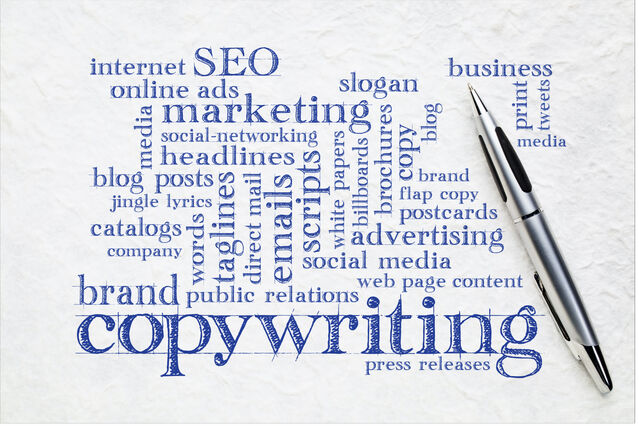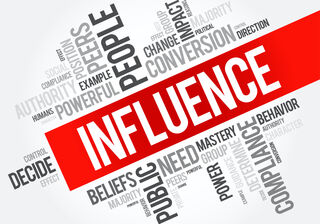Psychology
The Psychology of Successful Copywriting
10 secrets to engage and persuade.
Posted December 8, 2020
The field of study and practice of using words to influence targeted audiences to make purchases they may not otherwise have completed is called copywriting. While grammatical and factual accuracy can't be ignored, incorporating psychological and emotional hooks to enhance buying, clicking, calling, and subscribing are the essence of productive copy.
- News headlines that make you click
- Email subjects that get you curious
- Websites that excite you into buying something
- Radio commercials that get stuck in your head for days
- Social media ads that compel you to linger a bit longer
In this article, professional copywriter Tom Gil and I delineate 10 techniques that copywriters use to subliminally persuade, motivate, and influence their audience. Tom Gil is a certified copywriter and founding member of the copywriting group “Write Minds”. He is a Harvard-trained negotiator and former special forces sniper instructor. He helps ambitious real estate firms, e-commerce businesses and entrepreneurs sharpen their message, improve their voice and increase their earnings.

Attention is currency, which large corporations trade for money using copy that taps into the science of human behavior. Silicon Valley corporations pay top neuroscientists to find new ways to keep us engaged just a few seconds longer. Copywriting is much more than the “over-the-top” sales pitch with CAPITALIZATIONS and Bold typeface.
1. HOOK
Intrigue the reader to find out more; set the tone. A good hook gets the audience engaged, oriented, and curious. Some examples of effective hooks are:
- Provide shocking statistics
- Ask a rhetorical question
- Use an inspirational quote
- Give an anecdotal memoir
- Make a startling statement.
Tom worked with an E-logistics park in Europe to increase sales conversions. Changing one headline into a compelling hook increased email opening rates by 82% within 45 days.

2. CONVERSATION
Use narrative with a conversational tone to lead the reader to bond with the brand/business/product. Get the reader to feel like you are conversing directly with them. Rather than explaining subjects with technical jargon, use simple and fun explanations and examples.
Speak to the target audience as the second person - to them, not at them. Don’t focus on the business, but rather on the reader. Change “I”, “we” and “our” to “you” and “your”. For example, “Using our top-of-the-line products, we can improve productivity in the first 30 days,” versus “You can improve your productivity in 3 easy steps.” The first copy focuses on the business, the second on the customers. The goal is to have the audience quickly relate to, personalize, and connect the copy to their own lives.
3. EMPATHIZE
To treat your audience like friends, you should know them well. Not every product is for everyone. To empathize with the audience, you need to know who they are.
Ads are targeted to a specific audience. Incorrect targeting wastes advertising money. Prieto’s rule of 80/20 states that 80 percent of your business or sales occurs through 20 percent of your customers. Understand who those 20 percent are and target the copy to them to get the most bang for the buck. Develop a basic profile of your target customer to write compelling copy directed specifically for them; consider: gender, age, marital status, ethnicity, location, occupation, income, and interests.
Let your audience know that you understand and are empathetic to their challenges before you present any solution. For example, “We all hate looking at the scale and finding out we gained that weight back...”. The “we” is the reader and writer alliance. Now that we are in the same boat - fighting our battle with weight, selling you a miracle pill to lose weight will be easier.
4. FEELINGS
Emotions make life worth living...and often guide purchase and clicking decisions. Use specific words and psychological methods to paint pictures and trigger emotional reactions from the readers to inspire, motivate, and take specific actions. Write visualizations with enough detailed narrative to invoke an emotional response. For example, describing a biker falling from a motorcycle skidding across the asphalt shaving off his skin, should induce a cringe of pain by the reader and increase their interest in purchasing those new padded motorcycle pants.
Here are some words that reliably invoke feelings and add power to your copy:

Power Words - these are words you can almost always use in copy.
You - the cornerstone of effective copy. The best way to build trust and engage your audience. This is the main word that will convert readers into clients and customers.
Imagine - allows the reader to take a visual holiday and enter their “happy place”.
Because - Harvard Psychology Professor Ellen Langer showed that using the word “because” was highly effective in convincing people to let someone step in line in front of them. Here’s the kicker, it didn’t matter what followed the word, “because. People became mindless and believed that a good reason was going to follow.
What if - entertains awesome possibilities in the reader’s life (e.g. “What if you could work fewer hours and get paid more”).
Exclusive Words - give you the feeling that you have an exclusive opportunity.
- Special, limited, select, temptation, secret, hidden, exclusive, revealed
Urgent Words - gives you the feeling that you need to take action now.
- Instant, now, new, discover, hurry, quick, fast, today, rush, only, direct.
Caring Words - give you the feeling that the writer is empathetic to your needs.
- Family, dream, health, wellness, children, love, strength
Special Words - give you the feeling that you have a unique opportunity.
- Fresh, unique, announcing, exciting, breakthrough, introducing, surprising, astounding, amazing, awesome, small (ie. small fee), big, great.
Opportunity Words - give you the feeling that you are making a smart choice.
- Save, win, money, opportunity, reduced, cheap, bonus, discount, bargain.
Uncomfortable Words - give you the feeling that you are in trouble - which is followed up by the solution.
Reassuring Words - give you the feeling that you are safe
- Proven, guarantee, easy, simple, safe, safety, lifetime, can, tested,
5. STORY
The ancient art of storytelling is still practiced today because of its effectiveness in engaging an audience, drawing them in, and making them invested; first emotionally and then financially. In writing copy, provide the background - the backstory gives your reader a deeper understanding of the service or product. Provide enough details to make the story believable but don’t go overboard and lose the reader in nonessentials.
6. INVOKE A "YES"
Prime the prospect. Getting a user to insert their first name, then their last name, followed by their job title or email address increases the chances of them following through. Achieving “mini yeses” through small concessions makes it easier for them to say yes to the entire package. Commonly referred to as “The foot in the door technique,” start with premises likely to be accepted; builds consensus and trust. For example: “You know that frustrating feeling looking down at the scale just to see it didn’t budge and that you didn't lose any weight” makes it easier to say yes further down the line to your paid diet offer.

7. THEMES
Here are some successful formulae that are employed by copywriters.
Devil’s Advocate: Put obvious concerns in the spotlight. Playing the “devil’s advocate” actually persuades readers to give greater support to the original argument (Nemeth, et al, 2001). For example: “You’re probably worried about XYZ right now, here’s why you shouldn’t…”
Problem - Agitate - Solve (PAS): 1) Identify the reader’s problem - especially their internal struggles (what’s keeping them up at night) versus the external (obvious) issues. 2) Agitate the problem to invoke more pain. 3) Present the solution.
Share testimonials: Include areas like how clients were impressed by the profit generated, the speed of delivery, the positive experience, your solution solved their problem, etc.
Case study: A specific story similar to the testimonial and provides more details of the challenge/problem. The solution, and the result - the benefit (with specifics).
Empower: Make the reader feel like they are empowered to make this life-improving decision and your copy is merely a gentle guide.
Reference current events: When Nike used an ad with controversial football player Colin Kaepernick saying, “Believe in something, even if it means sacrificing everything.” As a result, Nike gained 6 billion dollars in market revenue.
8. SOLUTIONS
Focus on solutions; spend more time thinking about product benefits over features. Benefits can be more easily associated with positive feelings and are more relatable than are product features.
- Benefit = more efficiency. Thought = more time. Feeling = freedom.
- Benefit = greater income. Thought = more money. Feelings = freedom, happiness, opportunity, growth, progress.
- Benefit = personalized care. Thought = unique and different. Feeling = special, important
Try to avoid superlatives that invoke questioning sincerity and overtly appear to be pushing hard for a sale.
- Free, no cost, no risk
- Best, highest, fastest, cheapest, etc
- No purchase necessary
- 100%, always, never
9. SPACE
Most readers who face a wall of text; big chunks of endlessly long paragraphs, are overwhelmed visually and ultimately deterred, leading them to seek refuge and purchase elsewhere...
Use shorter sentences - keep it simple and leave enough white space, including paragraph spacing.
10. ACTION
Elicit a response with some sense of urgency. Write in an active rather than passive voice where the subject performs the action rather than receives the action. A clear, concise call to action (CTA) increases CTR (click-through rates) and revenue in the long run. Avoid generic CTAs like “learn more”; instead, instead, be more specific, like, “double your profit”.
Tom wrote copy for a company offering online certifications (https://www.protect.college). He identified the problem - lack of an accredited certification, agitated the problem - lack of time and money, and empathized with their frustration. He then provided a solution; showing them how it would feel like; and what their future can be after using their services. Finally, provided a call to action. Results? A 700% increase in sales in 60 days.
Please let us know which of these techniques (or others) are your favorites to use.
References
Charlan Nemeth, K Brown, J Rogers: Devil's advocate versus authentic dissent: stimulating quantity and quality. Eur. J Social Psych 31(6), Nov 13, 2001. https://onlinelibrary.wiley.com/doi/abs/10.1002/ejsp.58
Belinda Weaver: Problem-Agitate-Solve Oh My! Classic copywriting formula that converts. Copyright Matters. https://copywritematters.com/pas-classic-copywriting-formula/
S. Gunelius, 2008: Kickass Copywriting in 10 Easy Steps: Build the Buzz and Sell the Sizzle Entrepreneur Press.




